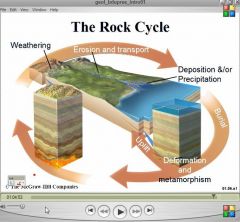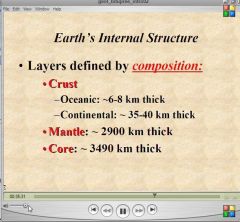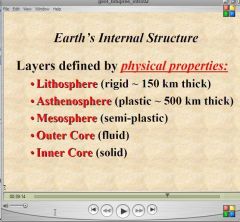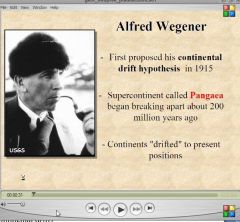![]()
![]()
![]()
Use LEFT and RIGHT arrow keys to navigate between flashcards;
Use UP and DOWN arrow keys to flip the card;
H to show hint;
A reads text to speech;
30 Cards in this Set
- Front
- Back
|
What is Science?
|
a way of thinking in the pursuit of understanding nature
a way of investigating claims about natural phenomenon a body of knowledge resulting from scientific inquiry |
|
|
Induction
|
Making generalizations from specific observations
|
|
|
Deduction
|
Making predictions from existing generalizations
|
|
|
Scientific Data
|
Representative and unbiased
Reproducible Observational or experimental If repeatedly confirmed, It is a scientific fact |
|
|
Hypothesis Must Be?
|
Able to predict future observations
Falsifiable it must be able to be proven wrong |
|
|
Theory
|
A well tested and widely accepted view that scientist agree best explain certain observational Acts
Like the hypotheses from which it grew, it must also be testable and falsifiable |
|
|
Scientific Revolutions
|
Ruling Paradigms- the set of theories generally agreed upon by scientists in a given discipline
Conflict develops as observations cant be explained by existing theories A new paradigm is proposed Conflict arises between the old paradigm and the new paradigm The new paradigm eventually takes over, to become the new ruling paradigm |
|
|
Catastrophism
|
All of earth's features were produced by a few great, sudden, catastrophic events
These events occurred relatively recently, and they were the direct results of god's will |
|
|
Plutonists vs. Neptunists
|
Neptunists: all rocks form from the precipitation from water
Plutonist: all rocks form from the cooling of magma |
|
|
James Hutton
|
Published "Theory of the Earth"
Principle of Uniformiatrianism Rock Cycle, Ect, ect, ect |
|
|
Uniformitarianism
|
The processes that have shaped the earth in the geological past are essntially the same as those operating today
|
|
|
The Rock Cycle: Know the three main rock groups and how they form.
|

|
|
|
The Rock Cycle: Know the three main rock groups and how they form.
|

|
|
|
How old is the earth
|
4.53 billion years old
|
|
|
Precambrian (including approximate age and major events)
|
540 million years to 4.53 billion years
88% of earth's history |
|
|
Phanerozoic
|
0- 540 million years
Three major time parts Cenozoic Mesozoic Paleozoic Organisms began to have hard parts; therefore they can be preserved |
|
|
Compositional Structures
|

|
|
|
Physical Properties
|

|
|
|
Internal heat engines
|
geothermal heat, this drives the formation of volcanoes, mountain belts, the continents and the ocean basin
|
|
|
External Heat engine
|
The sun- it drives the earths fluid envelopes
|
|
|
Alfred Wegener
|

|
|
|
Evidence of Continetal drift
|
Geometric fit of the continents
Geologic matches Fossil matches Paleo-climatic evidence |
|
|
Where are the world’s longest mountain chains located?
|
Mid Ocean Ridges (in the ocean
|
|
|
Harry Hess
|
Sea Floor spreading
|
|
|
Sea-Floor Spreading (and how it differs from continental drift)
|
sea floor formed at mid ocean ridges
sea floor consumed at trenches Process driven by convection in the mantle |
|
|
Magnetic inclination and how it varies with latitude.
|
Magnetic inclination: angle made between the magnetic field and horizontal
Magnetic declination: horizontal angle between magnetic north and true north |
|
|
Apparent Polar Wandering Curves
|
It relates back to Pangea
|
|
|
Magnetic Reversals
|
The flipping of the magnetic field as seen in the geomagnetic time scale
|
|
|
Geomagnetic time scale
|
used to date time when the field has flipped more then once
|
|
|
Magnetic Stripes (what are they and how do they form?)
|
symmetrical around the axis of a ridge
|

